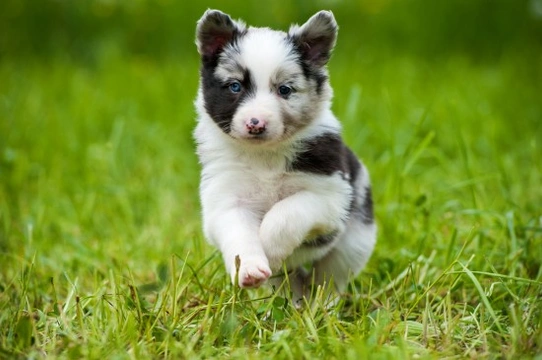
Dogs and Their Memories: A Guide to Canine Memory and Behaviour
Dogs are renowned for remembering training commands, recognising their favourite people, and anticipating daily activities like feeding or walks. But how exactly do dogs remember? While they do possess forms of long-term memory, their memory mechanisms differ from humans, focusing on sensory associations and emotional impacts rather than recalling specific events in a linear fashion.
Associative and Long-Term Memory in Dogs
Dogs rely heavily on associative memory, where scents, sounds, or actions become linked to positive or negative outcomes. For example, the sound of a leash or the sight of sneakers might excite a dog because they associate it with going for a walk. Remarkably, dogs have strong long-term memories, often remembering people and experiences for years, especially when linked to emotional contexts like comfort or reward. Their memory is less about recalling exact details and more about identifying patterns and feelings associated with those experiences.
Understanding Dogs and Episodic Memory
Episodic memory, the human ability to recall specific past events and contextualise them in time, is less developed in dogs. Studies suggest dogs operate mostly in the present moment without a clear understanding of abstract time concepts such as past or future. Your dog may recall happily visiting a particular park and get excited when you approach it, but they do not think in terms like 'last week' or 'last year.' Their memories here are tied to emotions and routine rather than the passage of time.
Natural Rhythms vs Time Awareness
Dogs tend to ask for food, walks, or rest around similar times each day, but this behaviour stems more from natural biorhythms than an awareness of time like humans possess. These natural cycles create a biological routine, making consistency and routine crucial for a dog's emotional stability and happiness. When your dog ‘‘knows’’ it’s dinner time, they respond to internal cues rather than reading a clock, relying on physical sensations and habits.
Procedural Memory: Learning Through Training
Procedural memory enables dogs to remember training commands and actions through repeated practice and rewards. When you train your dog, their brain forms neural connections that associate specific commands with positive outcomes like treats or praise. This type of memory allows dogs to respond instinctively, without consciously recalling the individual steps of training. For instance, a dog will instantly sit on command because the action is ingrained through consistent reward-based learning.
Spatial Memory: Orientation and Household Familiarity
Spatial memory equips dogs with the ability to remember the layout of their home environment, including where furniture or their bedding is located. Changes like rearranged furniture or moving house can cause your dog to reassess their surroundings, showing their awareness of spatial changes. This memory also helps dogs recognise friendly visitors or places that have previously offered positive experiences.
How Aging Affects Canine Memory
Just like humans, dogs experience decline in cognitive functions as they age, sometimes developing Canine Cognitive Dysfunction Syndrome, akin to Alzheimer’s in humans. This condition can affect their memory, causing confusion, forgetfulness, and changes in behaviour. Older dogs might struggle with retrieving or forming new memories, so careful observation and veterinary support are important to manage these changes compassionately.
Promoting Responsible Dog Ownership Through Understanding Memory
Understanding how your dog memories work helps foster deeper empathy and patience in training and daily care. Recognising the importance of routine, positive reinforcement, and sensory cues means you can nurture your dog’s memory and well-being effectively. Responsible ownership includes appreciating your dog's unique ways of experiencing the world and advocating for ethical training methods that enhance their memory and behaviour in a kind and supportive way.
For those seeking to find a new canine companion, it is advised to choose from reputable breeders or adoption centres to ensure the health and wellbeing of puppies and dogs. Responsible purchasing supports ethical breeding and reduces the risk of behavioural and health issues tied to poor breeding practices.
Frequently Asked Questions
How long is a dog's memory?
Quick Answer: Dogs have a short-term memory of about two minutes but can retain long-term memories for years, especially those tied to emotions and routines.
While dogs quickly forget specific short-term details, their ability to form and access long-term memories is notable. These long-term memories often centre on positive experiences like affection, food, or familiar routines, making them excellent at recognising their owners and responding to trained commands despite the time passed.
Do dogs understand the concept of time?
Quick Answer: Dogs do not understand the abstract concept of time, but they respond to routines and natural rhythms that guide their daily behaviour.
Unlike humans, dogs do not perceive time linearly and cannot think in terms of past, present, or future as abstract concepts. Instead, they react to physical cues and biological rhythms, which means consistency in routine helps dogs feel secure and less anxious. Their excitement for walks or food reflects anticipation based on experience, not knowledge of the actual time on a clock.
Can dogs remember people after a long time?
Quick Answer: Yes, dogs can remember people for years, especially if those memories are associated with positive emotional experiences and sensory cues like scent.
Dogs' memories are strongly linked to their senses, particularly smell, and emotional connections. This powerful memory means dogs often recognise familiar humans after long separations, responding with affection or recognition cues.



